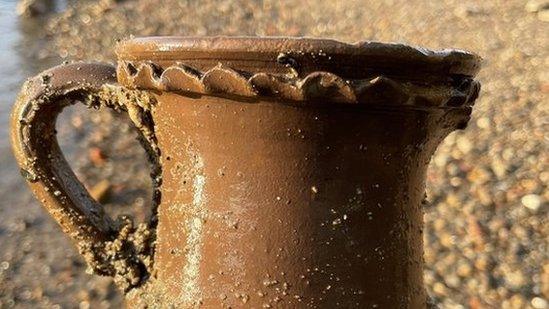London Roman wall on display after 40 years hidden in basement
- Published
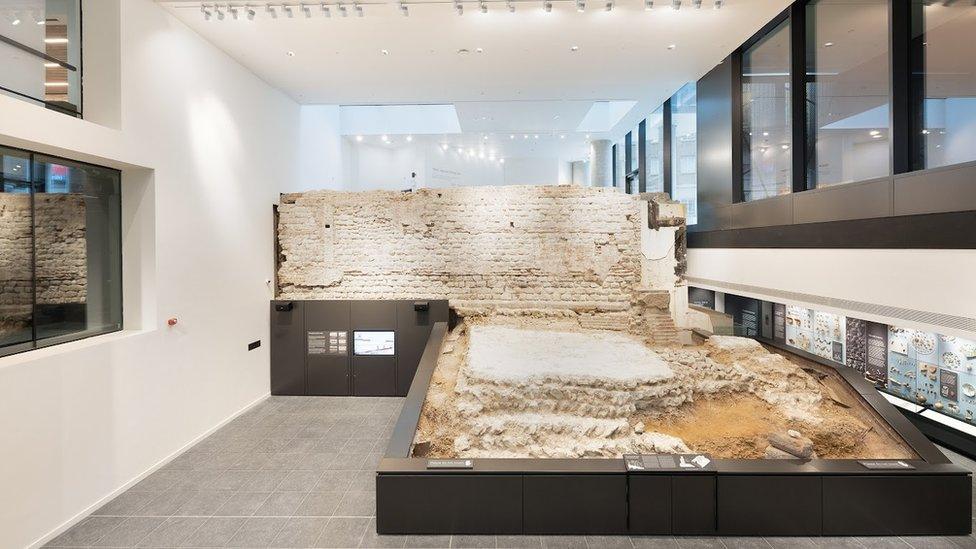
The wall has been incorporated into the design of the new building
A large section of a Roman wall found in the City of London has gone on display after spending more than 40 years hidden in a basement.
The wall, which was uncovered in 1979 at Roman Wall House, can now be seen alongside other artefacts at the City Wall at Vine Street museum display.
The venue is free to visit and forms part of a redevelopment of the site, which includes student accommodation.
The wall was previously tucked away at the bottom of an office building.
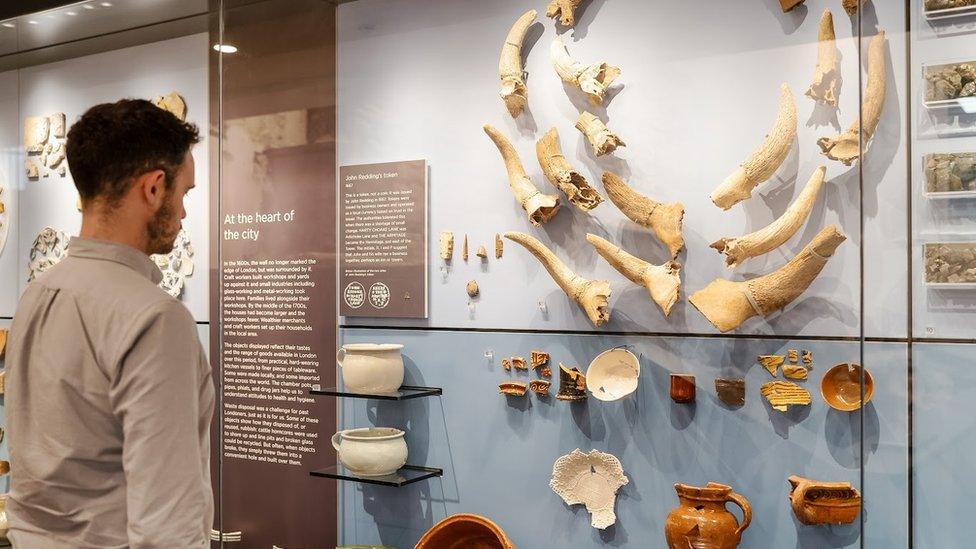
Other Roman relics are on display alongside the Roman wall
After acquiring the site in 2016, developers Urbanest worked alongside the City of London Corporation, as well as Historic England and the Museum of London, to incorporate the wall into the design so that it would be visible again.
The wall is the centrepiece of a display which also features artefacts lent and curated by the Museum of London from its London Collection.
These include a tile marked with a cat's paw print, Roman coins and discarded animal bones. All items were recovered from Vine Street or nearby.

London's Roman City Wall
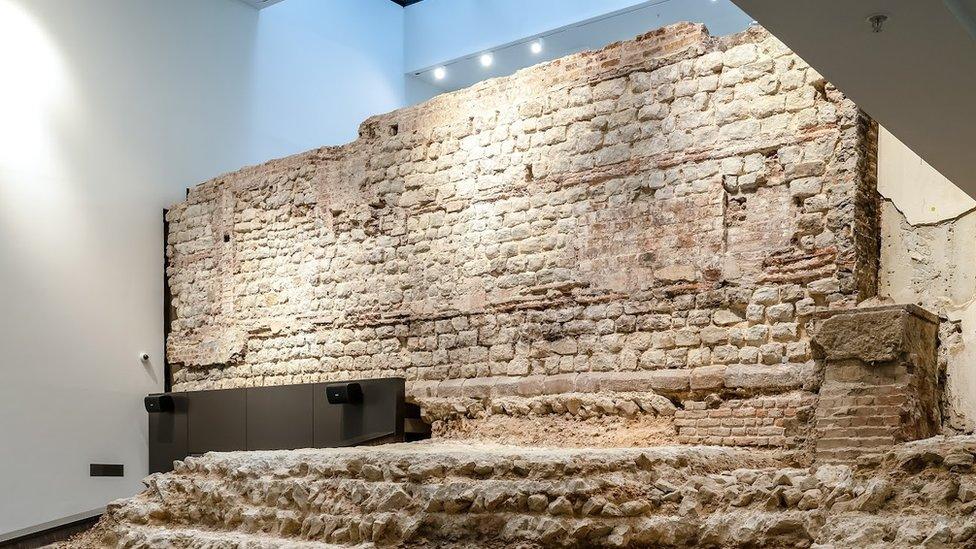
Built about 1,800 years ago, when Britain was a Roman province and Londinium was its capital
It was completed between AD 190 and 230
About 3km (1.9 miles) in length, the wall served as a boundary and a status symbol, proclaiming the wealth and importance of the city
The original Roman wall was between two and three metres thick, faced with square blocks of Kentish ragstone, a limestone quarried in Kent, and filled with rubble and concrete. Characteristic red ceramic bricks strengthened and levelled it
Many years after the end of Roman rule, the wall was rebuilt and marked the limits of the medieval City of London
As centuries passed, London grew and the area around the wall changed. Gradually, it was swallowed up by buildings
Source: Historic England

The redevelopment of the site includes new student accommodation for postgraduates studying at King's College London and office space.
Anthony Mellalieu, development director at Urbanest, said: "For so long, this site sat empty and hid a brilliant historic asset which we were delighted to help bring to life.
"It seems very fitting that those studying postgraduate courses at King's College London can live above such a wonderful piece of this city's history."
Tom Foxall, regional director at Historic England, said it demonstrated that "archaeology and heritage need not be an obstacle to new development".
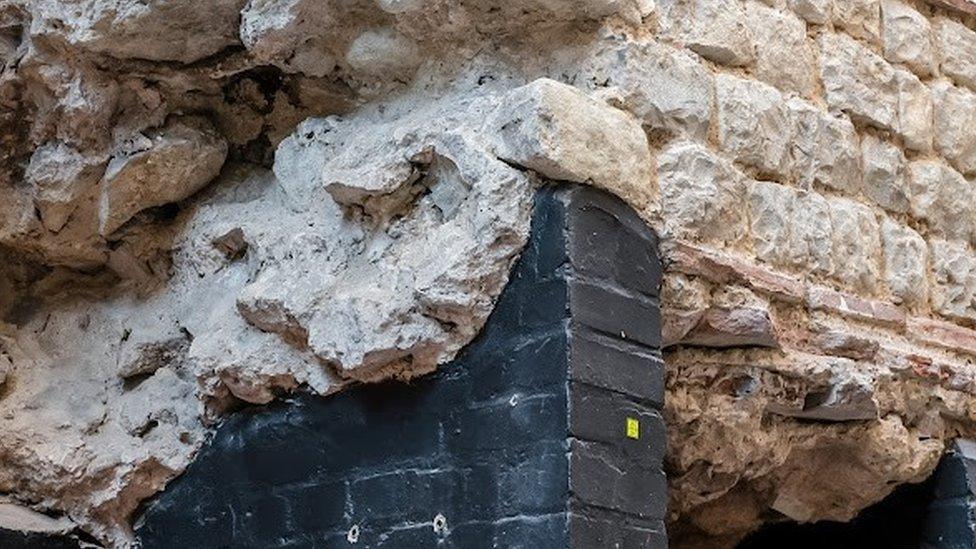
Grey steel props have been added alongside the existing red steel jacks as a permanent support for the wall inside the new building
Finbarr Whooley, director of content at the Museum of London, said: "Like so many Londoners, I have always been fascinated by the rich stories that exist across the capital, around every corner and in unexpected places.
"This will be a fantastic way for people to stand in the shoes of Roman Londoners and discover more about our history, surrounded by the historic walls of the city."

Follow BBC London on Facebook, external, Twitter , externaland Instagram, external. Send your story ideas to hellobbclondon@bbc.co.uk, external
Related topics
- Published2 February 2023
